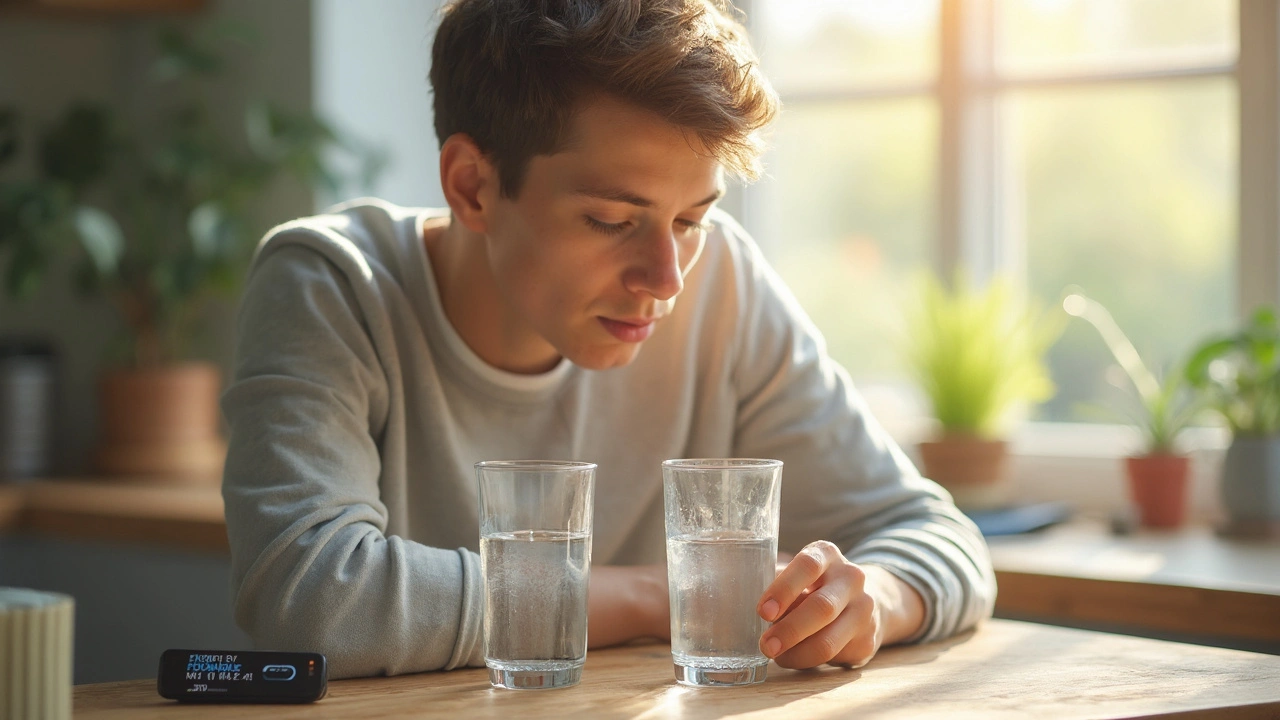Staying hydrated while taking spironolactone isn’t always straightforward—too little water can lead to dehydration, while too much can throw off your electrolytes. Learn how to strike the right balance with specific hydration guidelines, practical tips, and a deep dive into what actually happens when you’re on this common medication. This article covers risks, symptoms, and offers actionable steps backed by recent studies. If you take spironolactone for acne, high blood pressure, or hormone-related issues, here’s what you need to know about daily water intake and keeping your body's balance in check.
Water Intake: How Much to Drink and Why It Matters
We all hear "drink eight glasses a day," but the real answer depends on your body, activity, and environment. Knowing the right amount helps you stay focused, avoid headaches, and keep kidneys happy.
What Your Body Actually Needs
Most health agencies suggest about 2 liters (roughly eight 8‑oz cups) for adults, but that’s a starting point. If you exercise, sweat a lot, or live in a hot climate, you’ll need more. A good rule of thumb is to add 0.5 liters for every 30 minutes of moderate exercise.
Body size matters too. Larger people have more water in their cells, so they usually need a bigger sip count. You can estimate personal needs by dividing your weight in pounds by 2 and drinking that many ounces each day. For a 160‑lb person, that’s about 80 oz, or just under 2.5 liters.
Signs You’re Not Getting Enough
Feeling tired, having dark urine, or getting frequent headaches? Those are classic dehydration clues. Your skin might lose its bounce, and you could notice dry mouth or a sticky feeling on your tongue.
Even mild dehydration can affect mood and concentration. If you catch yourself reaching for coffee more often, try a glass of water first. Sometimes a quick sip can clear the fog without the caffeine spike.
Most people miss water because they don’t feel thirsty until they’re already low on fluids. That’s why habit matters more than occasional thirst.
Here are a few easy ways to keep your intake steady:
- Carry a reusable bottle and refill it several times a day.
- Set a timer on your phone for a quick sip every hour.
- Eat water‑rich foods like cucumber, watermelon, and oranges.
- Swap one sugary drink a day for a glass of water with a slice of lemon.
If you’re tracking, a simple spreadsheet or a hydration app can show you exactly how much you’ve drunk. Mark each glass, and you’ll see patterns quickly.
Don’t overdo it, though. Drinking huge amounts in a short span can stress kidneys and dilute electrolytes. Spread your water intake throughout the day, and listen to your body’s cues.
Special groups—like pregnant women, older adults, and athletes—should pay extra attention. Pregnancy raises blood volume, so a few extra glasses help. Seniors often have a blunted thirst response, so scheduled drinking becomes crucial.
Lastly, remember that other drinks count toward your total. Tea, coffee, and milk add fluid, but watch for caffeine’s mild diuretic effect if you consume a lot.
Staying hydrated isn’t a mystery; it’s a daily habit you can build in minutes. Find a bottle you like, set a simple reminder, and notice how a bit more water improves your day. Your body will thank you with clearer skin, steadier energy, and smoother focus.

